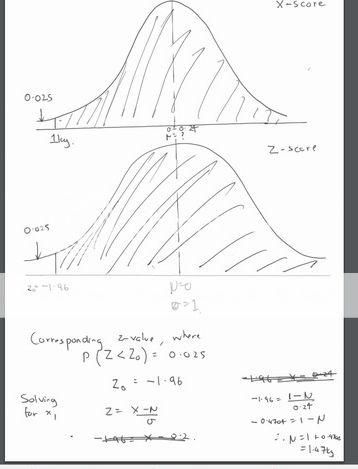davidgoes4wce
Well-Known Member
Re: University Statistics Discussion Marathon
The company Atherton uses a particular machine to fill 1 kg bags with sugar. The weight X of the machine processed bags follows a normal distribution with mean and standard deviation
and standard deviation  =0.24. The machine mean weight can be set by the operator to any value between 0 kg and 50 kg. Regulations allow to sell sugar bags as "1 kg bags" if at least 97.5% of the production is 1 kg or heavier. Answer the following question, round off the final results to 2 dp, but without rounding numbers during your calculations.
=0.24. The machine mean weight can be set by the operator to any value between 0 kg and 50 kg. Regulations allow to sell sugar bags as "1 kg bags" if at least 97.5% of the production is 1 kg or heavier. Answer the following question, round off the final results to 2 dp, but without rounding numbers during your calculations.
What mean weight should the machine be set to in order to produce 97.5% of the bags weighting at least 1kg?
should the machine be set to in order to produce 97.5% of the bags weighting at least 1kg?
The company Atherton uses a particular machine to fill 1 kg bags with sugar. The weight X of the machine processed bags follows a normal distribution with mean
What mean weight



